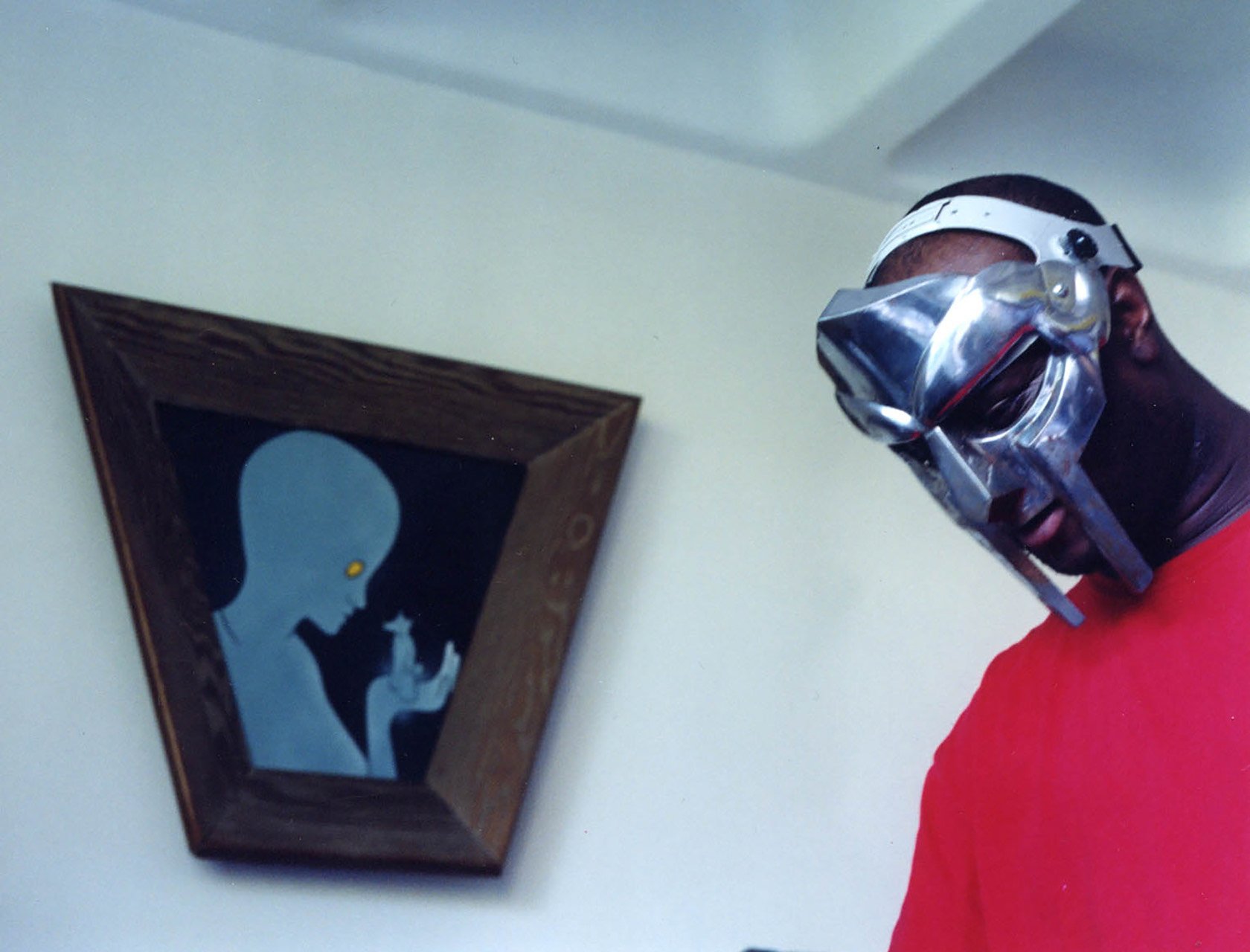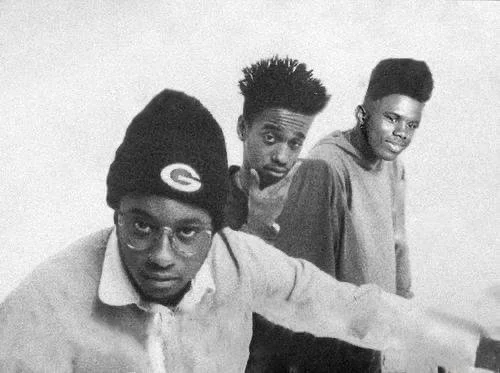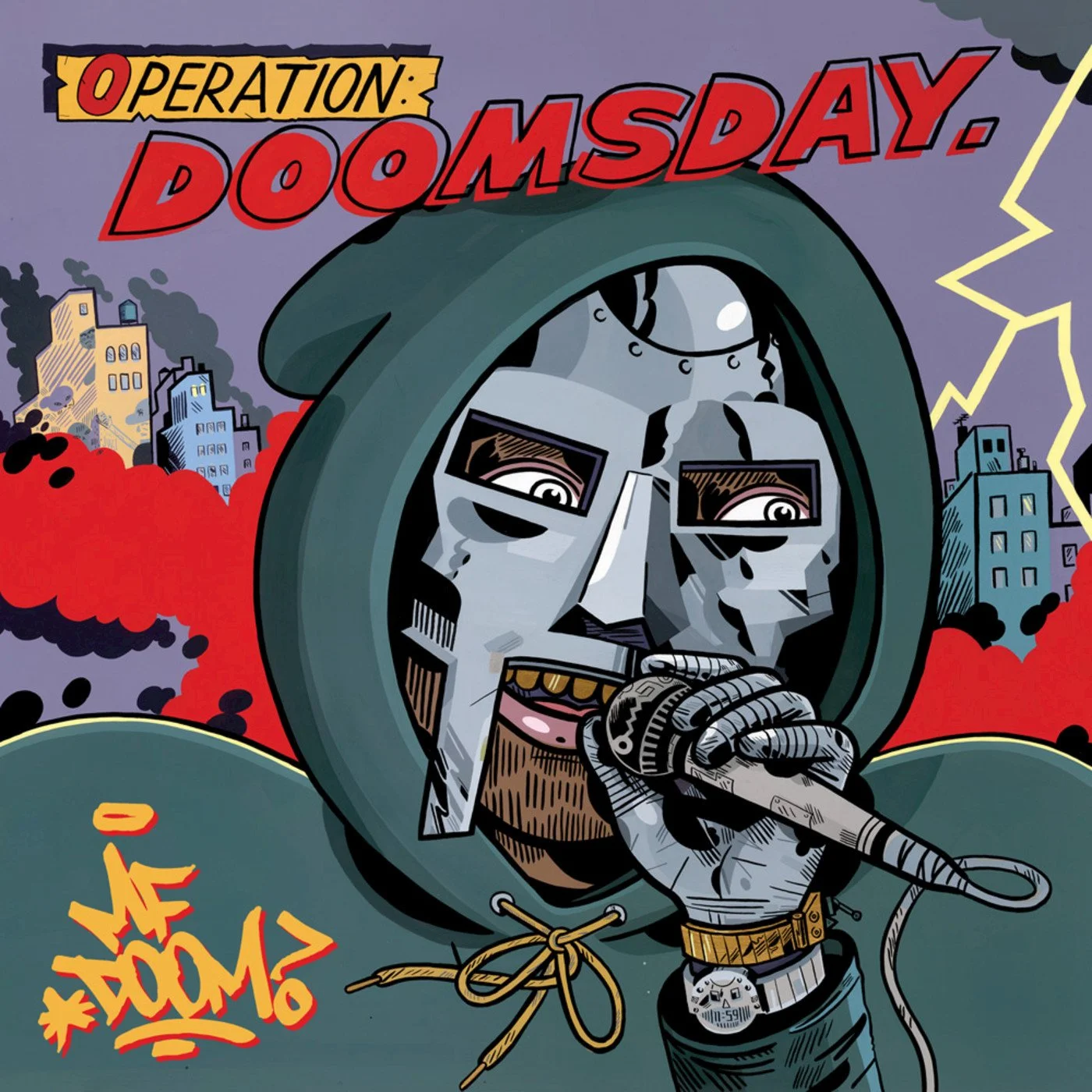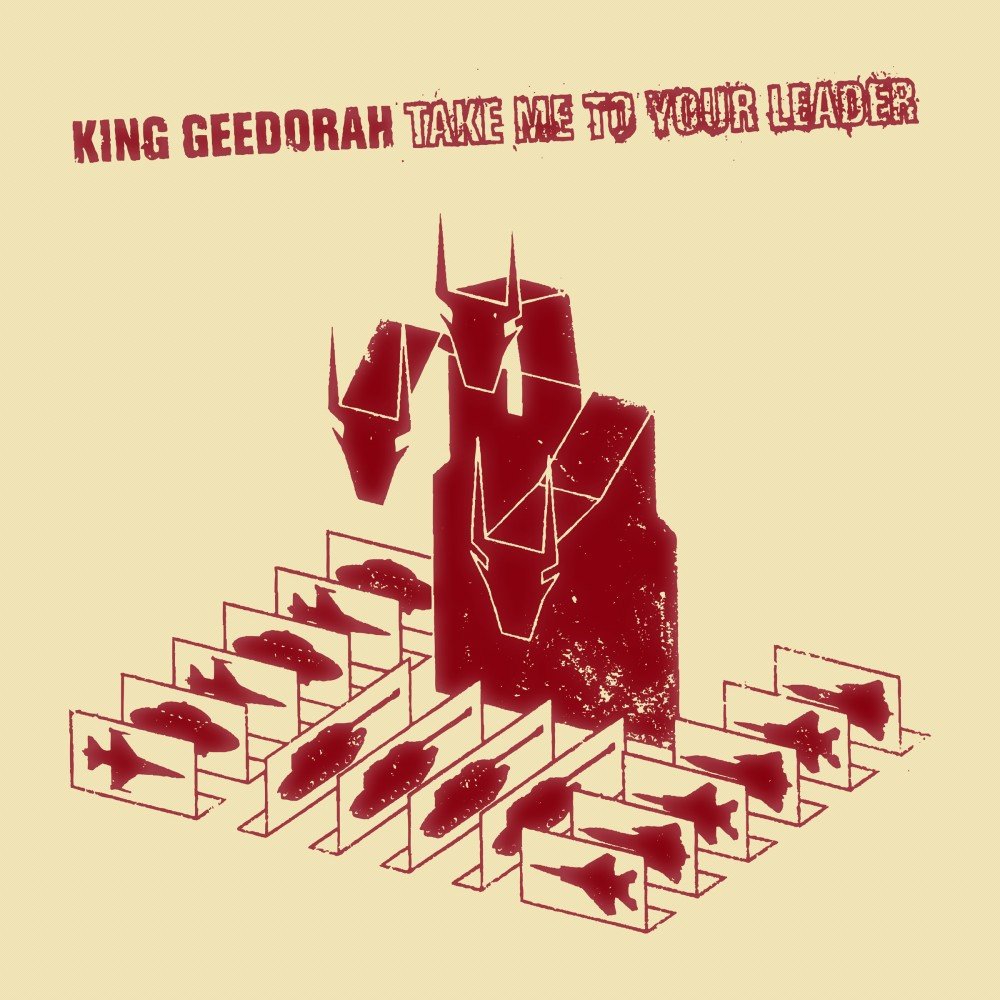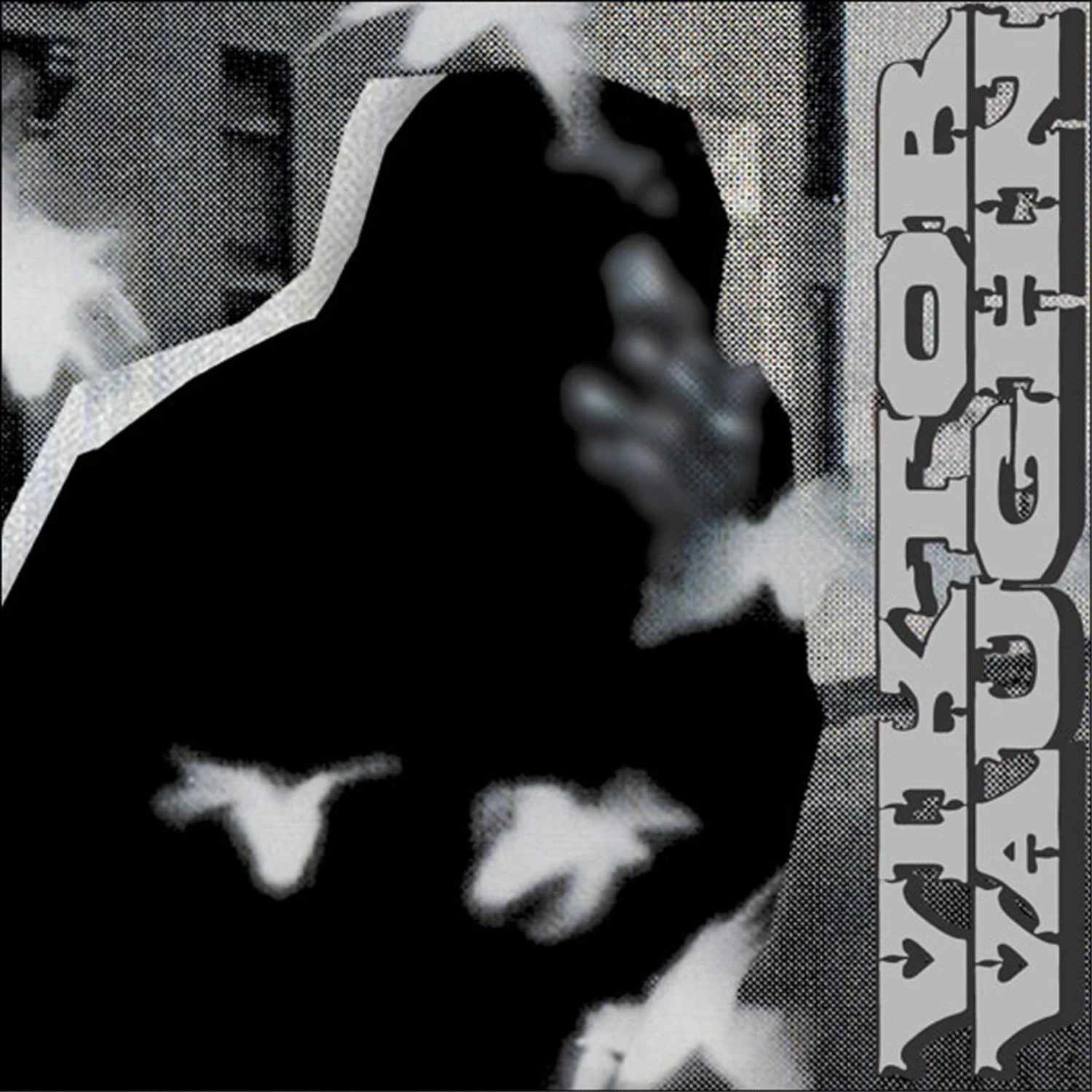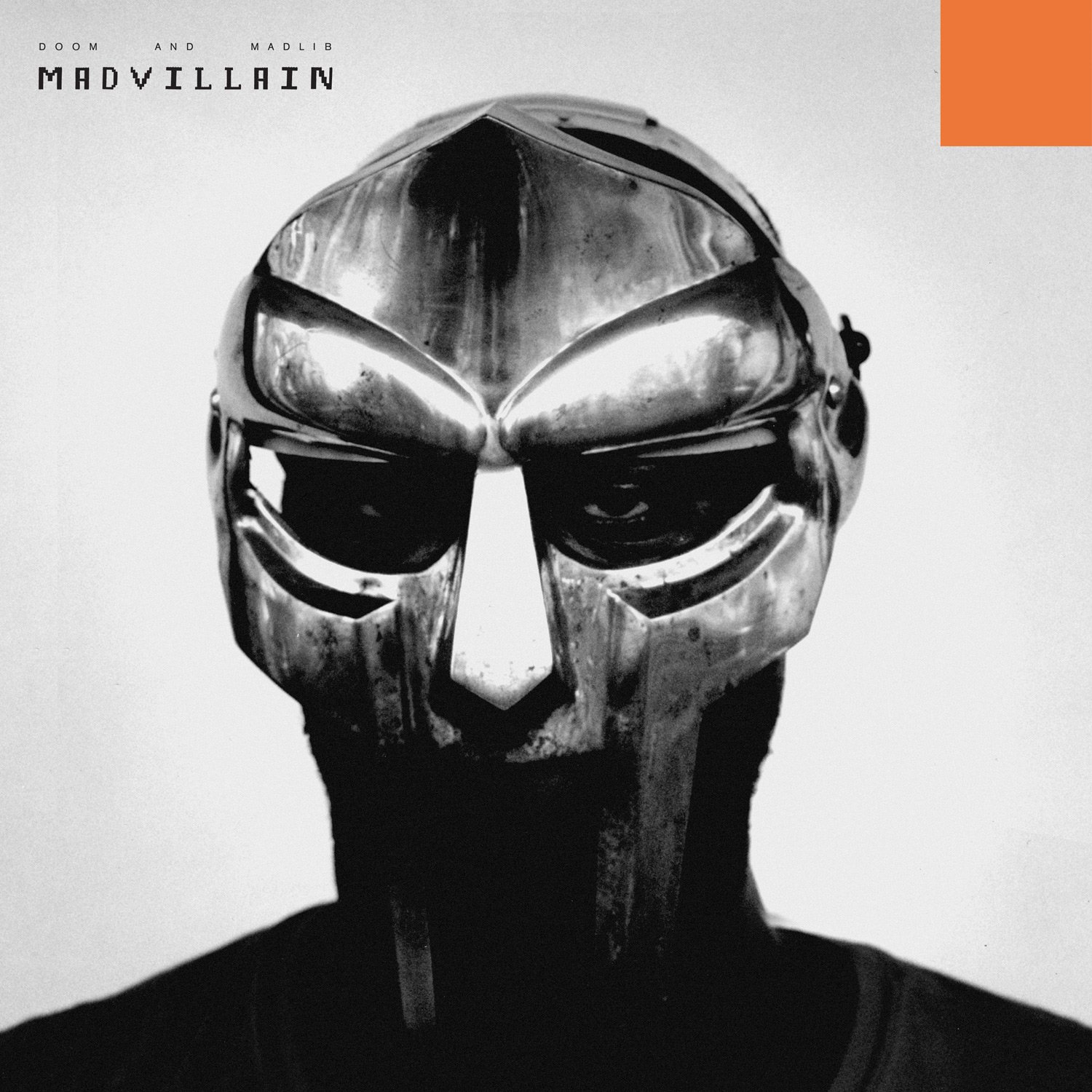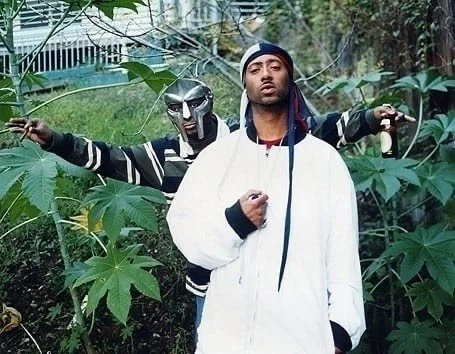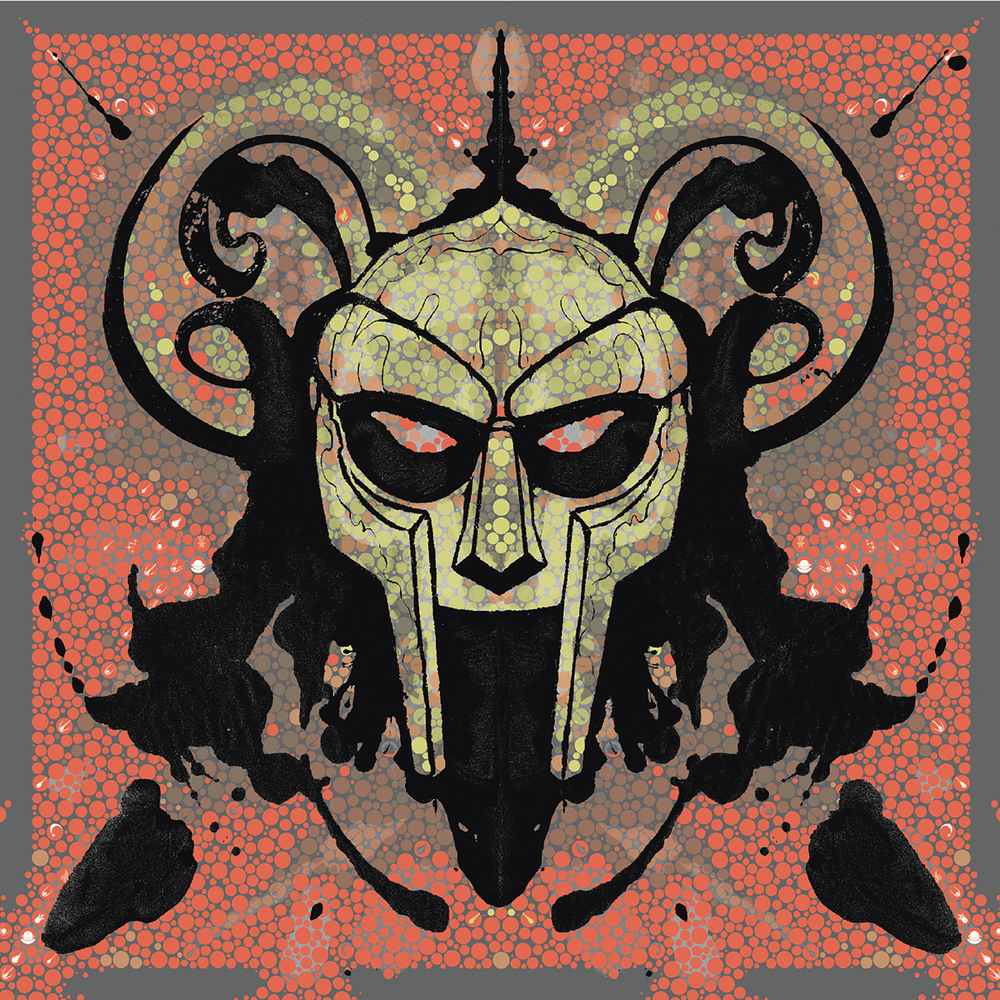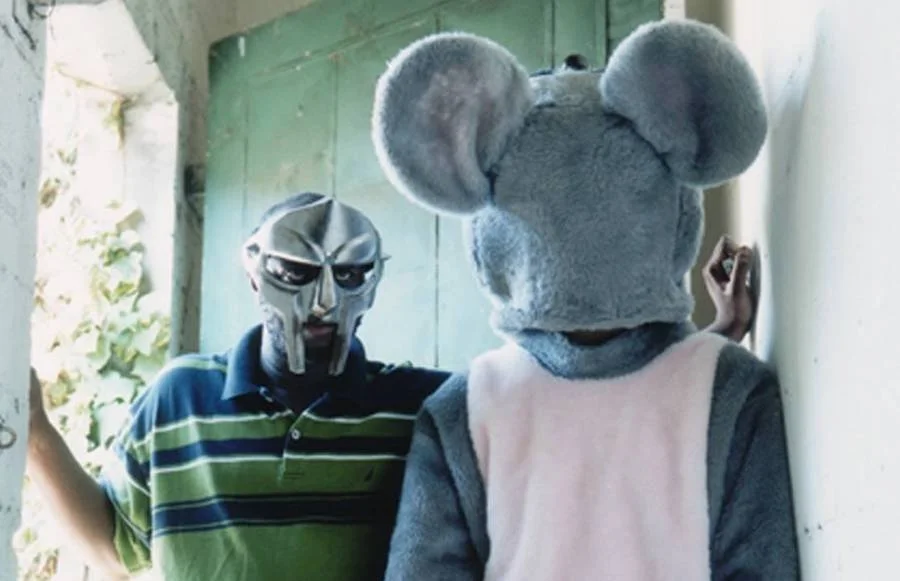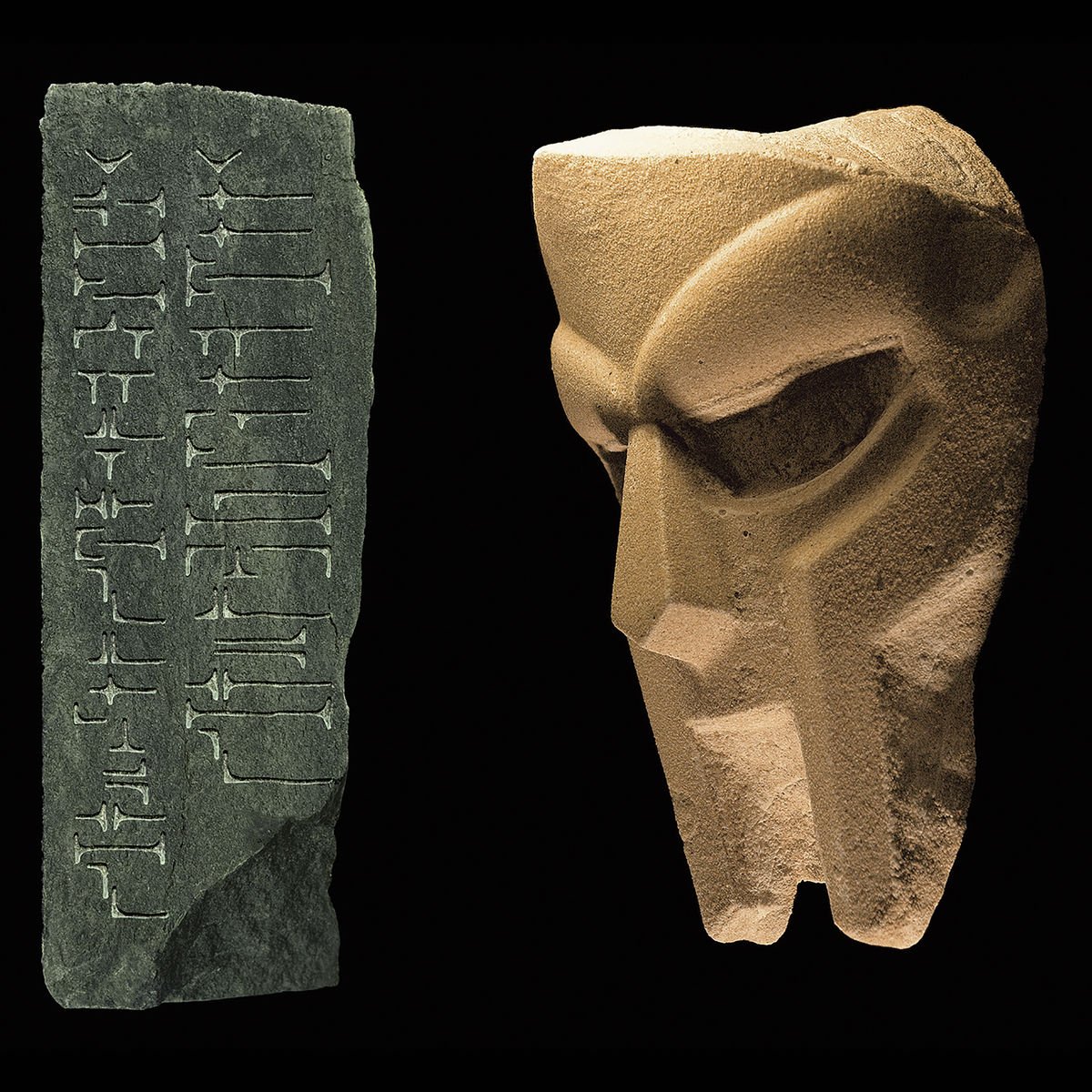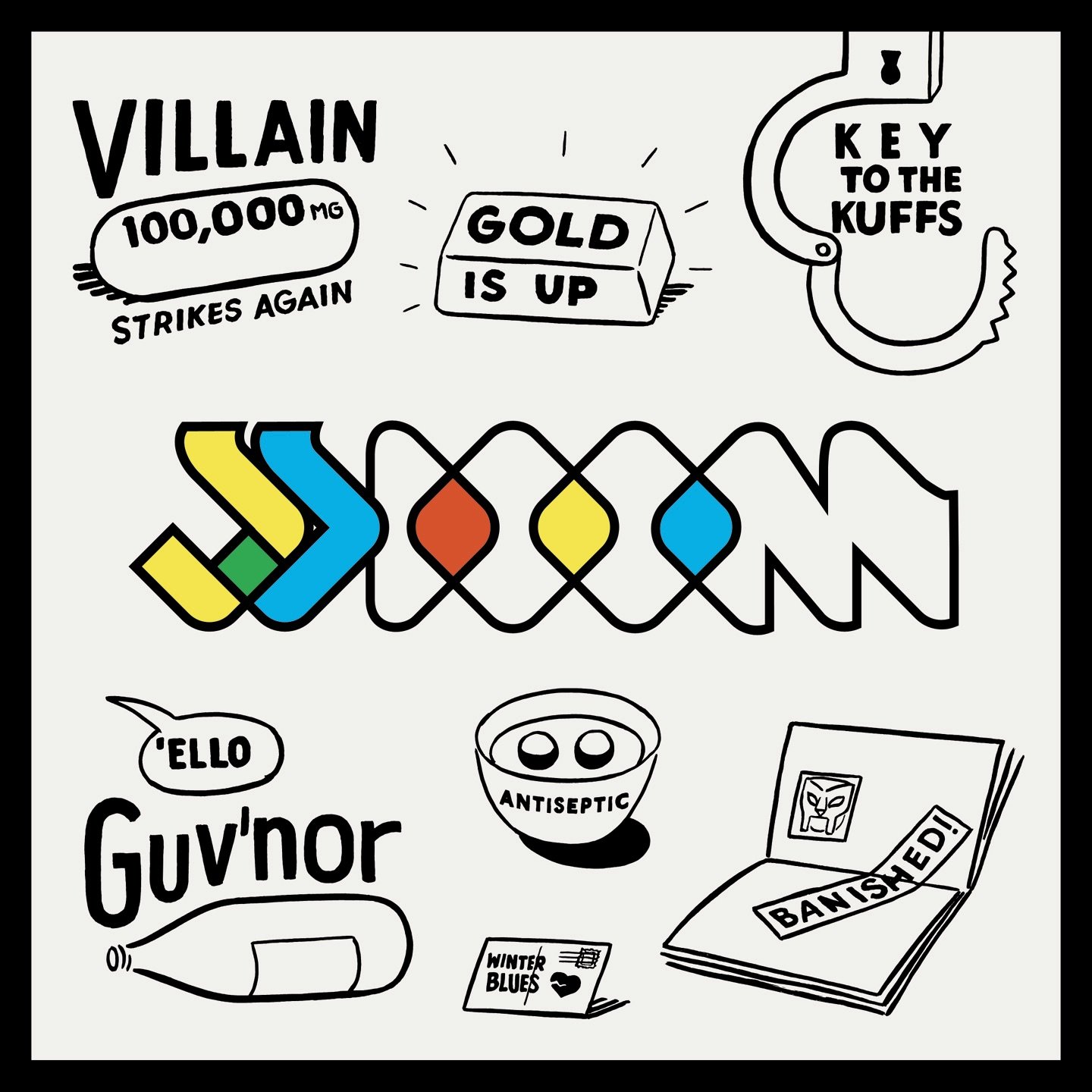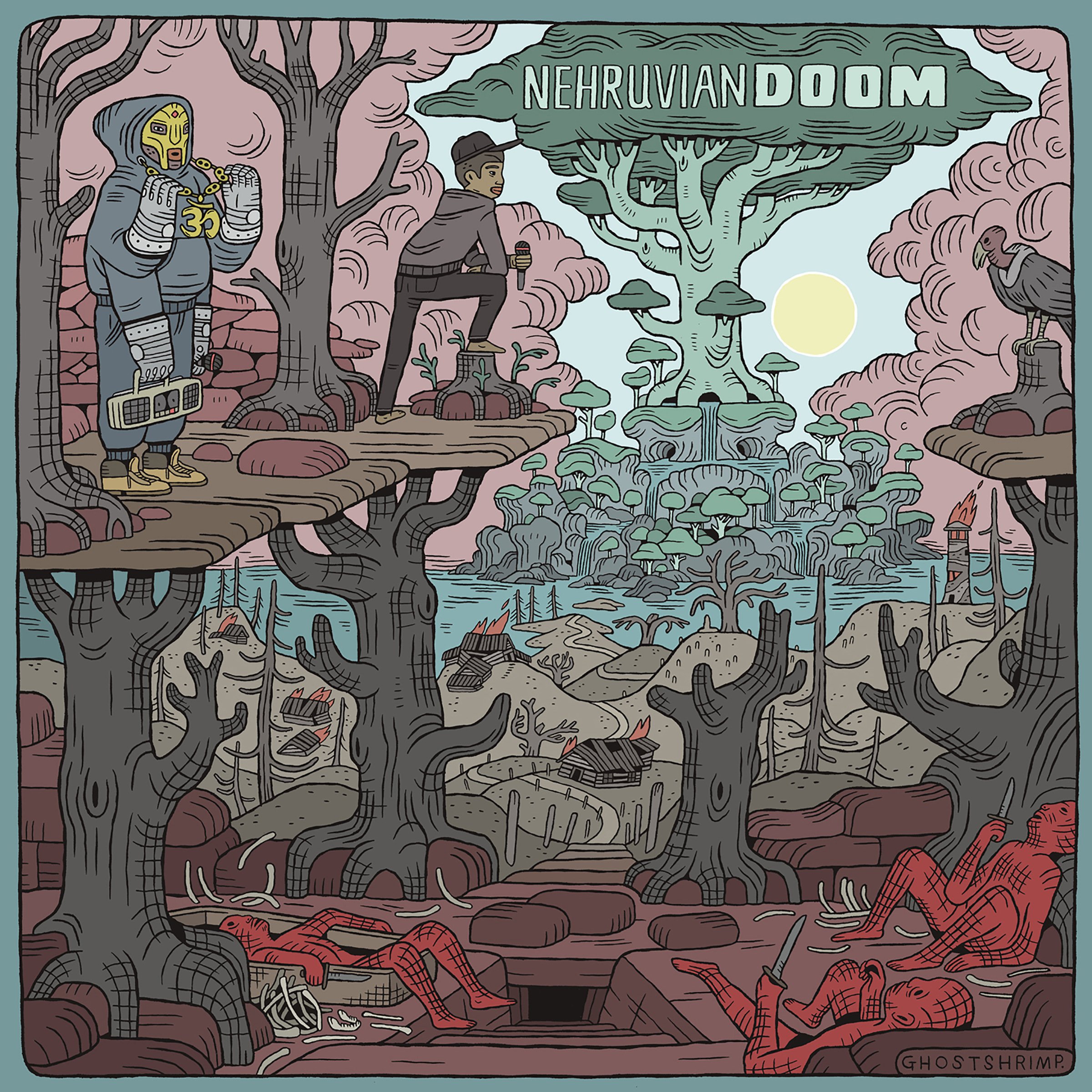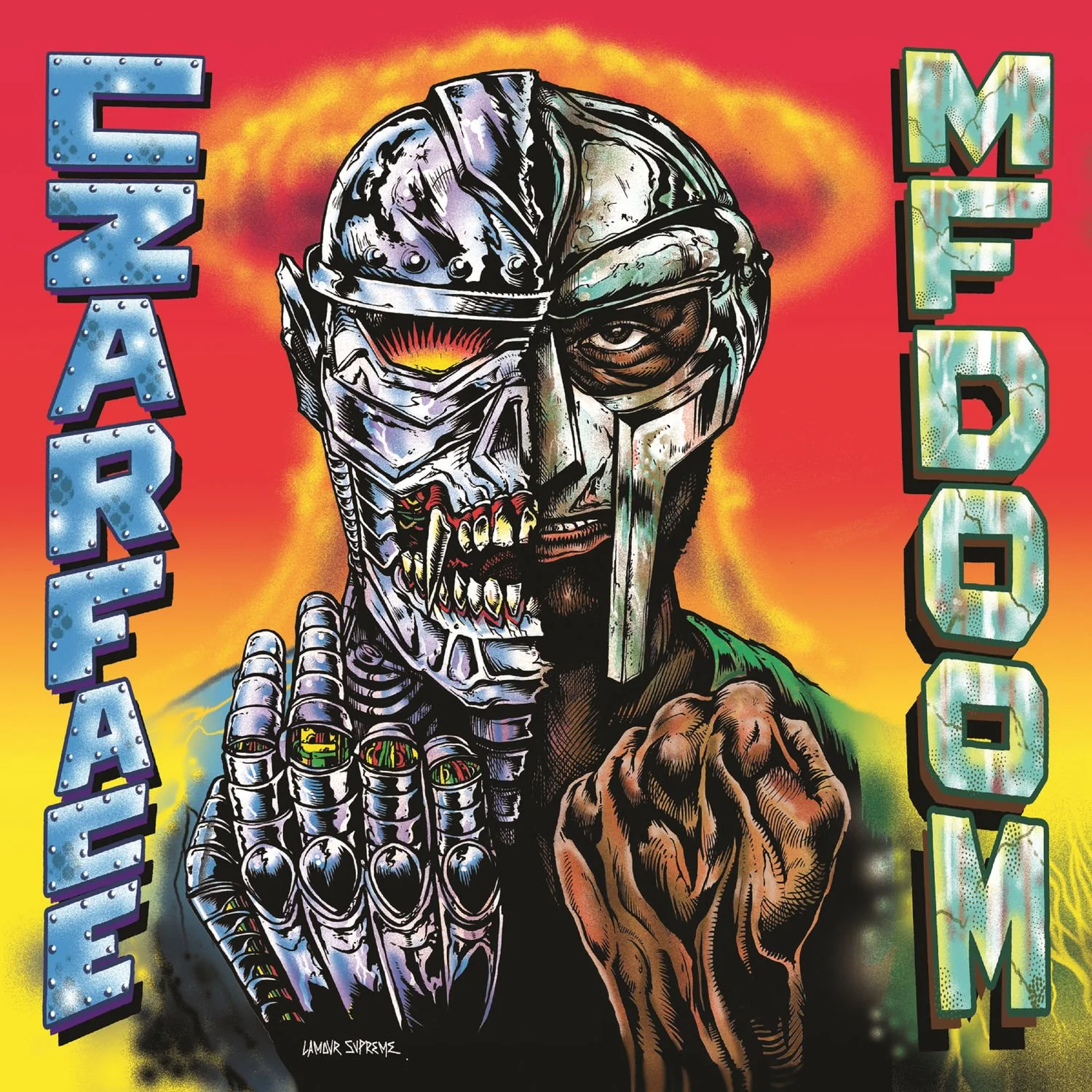The Art of the Supervillain: Analyzing the Identities of MF DOOM
By Emmett Favreau
Regardless of his many identities, legendary underground hip-hop artist MF DOOM was identifiable the second he appeared on a stage or screen. While his unique rhyme schemes and baritone voice certainly defined most of his character, it’s impossible to ignore the centerpiece of DOOM’s identity: his comic book-inspired gladiator mask. According to DOOM, he wore the mask as “an easy way for people to see and differentiate between characters, sorta like when an actor gains weight for a role. Throwing on the mask was just a good way to switch it up.” If we think of Daniel Dumile—the rapper’s real identity—as an actor, MF DOOM was just one of the many roles he played when he put on the mask. To become acquainted with the supervillain’s inner workings, one must take a deep dive into all the names that combine to create the legend known as DOOM.
Daniel Dumile began his rap career as a young adult in 1988, under the stage name Zev Love X. He was a part of the rap trio KMD, which consisted of Dumile, his brother Subroc, and their friend Rodan. KMD’s commercial debut was on 3rd Bass’s song “The Gas Face.” After a verse from MC Serch, the mic is passed to Zev, who delivers a verse with intricate rhyme schemes that remind me of what I know and love about Dumile – his pen. Zev delivers a crazy scheme, rapping:
Damn, if looks could kill
You look like your host was a ghost from your grill
But still
(Dumile, 1989)
Across all of his identities, Dumile uses a multi-syllable rhyming style to make an entire bar one giant rhyme. For example, he rhymes “kill” with “grill” and “still,” while simultaneously rhyming “host” with “ghost,” creating two rhyme schemes within one bar.
From a young age, Dumile was a fan of cartoons—especially Marvel—which earned him the nickname ‘Doom’ among friends and family, based on the masked mastermind Doctor Doom. This love of cartoons (and to be fair, being Black in America in the 1990s) inspired Dumile to decide that the cover art of KMD’s second album, Black Bastards, would feature a controversial caricature of a black male (known as “Little Black Sambo”) being hung from a noose. In complete contrast to the lighthearted approach to serious subject matter KMD took on their debut album Mr. Hood, Black Bastards discussed violence, sex, and drug usage in a solemn and vulgar manner. Right before the release of the album, Subroc was tragically hit by a car, passing away and leaving KMD in young Dumile’s hands. The album was released in May of 1994 to mixed reviews, and the controversial cover art led to the group being dropped by their label Elektra. They disbanded soon after. Dumile found himself at rock bottom; homeless, he was forced to leave his hometown of New York.
This was a pivotal moment for Dumile, as he began to embrace the character of Dr. Doom beyond a simple nickname. The fictional Marvel character Doctor Doom, born Victor Von Doom, is a scientist who created a machine designed to help him communicate with his dead mother. The machine failed, permanently damaging Victor’s face and forcing him into solitude. Eventually, Victor returned for revenge, donning a silver mask to hide his deformity. Dumile adopted Victor’s backstory as he sought out revenge on the industry that failed him and his brother and ignored their shared vision. In 1999, Dumile returned to the spotlight with his debut album Operation Doomsday. This time, he covered his face with a silver gladiator mask and donned a new moniker: MF DOOM.
Operation Doomsday solidified MF DOOM (originally short for “metal face doom”) as a name within the underground hip-hop scene. The beginning of the album confirms his comic book inspiration by sampling a 1967 episode of Fantastic Four, whose main villain was Doctor Doom. DOOM makes his entrance on “Doomsday,” describing his villainous plot for revenge as well as sticking with the braggadocio typically seen in hip-hop at the time. In an assault of rhymes and wordplay, DOOM raps:
Bound to go three-plat
Came to destroy rap
Then release a statement to the press, let the rest know who did that
Metal Fist terrorists claim responsibility
(Dumile, 1999)
Following the release of the album, DOOM changed the MF in his name from standing for “metal face” to “metal fingers,” and released an instrumental album known as Special Herbs Vol. 1, which featured instrumentals from his popular songs as well as never-before-heard beats.
Alternate monikers quickly became a signature of DOOM’s evolving character, with one of his first being the three-headed reptilian Godzilla monster King Geedorah. DOOM describes Geedorah as having a similar role to a satellite, relaying information to DOOM for a wide variety of purposes. Because of this, DOOM barely rapped under the Geedorah persona, releasing only a single album under the moniker, Take Me to Your Leader, in 2003. In fact, the album’s most popular song “Next Levels” only features DOOM as a production credit. However, in “Fazers,” DOOM grabbed the mic to solidify Geedorah as a powerful character to be feared even more than the villainous MF DOOM. Their relationship reminds me a bit of Emperor Palpatine and Darth Vader from the Star Wars series. Like Vader, DOOM is the central villain we see in the forefront, while Geedorah, like Palpatine, is the mastermind behind the scenes who manipulates DOOM. In a ridiculously intricate bar, Geedorah displays this dominance, rapping:
Hit the studio, and I'm paid
Half upfront, half upon mastering
"Would you like that in cash?"
Last thing you should ask the king
(Dumile, 2003)
“Fazers” is a perfect example of DOOM’s pen evolving as he becomes a new character. His multi-syllabic rhyming continues to define his lyrics as he rhymes the word half with cash, last, ask, and the first syllable of mastering, while simultaneously rhyming the entire word mastering with the phrase “ask the king.”
Shortly after the release of Take Me to Your Leader in June, DOOM changed his persona once again to what British music magazine NME called a “time traveling street hustler” known as Viktor Vaughn (a play on Dr. Doom’s real name) for his album Vaudeville Villain, which was released in September. Continuing with DOOM’s penchant for comic book levels of absurdity, Vaudeville Villain sees DOOM traveling back in time and eventually getting stuck in early 1990s New York. The album follows DOOM’s day-to-day antics while he hustles money to fix his time machine, and the many features are meant to represent the people who help him along the way. While Viktor Vaughn isn’t an elaborate new character, it’s the slight changes to the way DOOM raps on Vaudeville Villain that make the character unique. For example, DOOM abandons the supervillain antics and solely focuses on flexing his lyrical ability. In my opinion, I don’t believe it is close to DOOM’s best work, but it displays DOOM’s ability to change personas and tell a different story.
In 2004, after constantly changing monikers and backstories, DOOM returned to his original moniker and released my personal favorite album of his, Mm..Food. The album is considered by many (most notably Black Star members Talib Kweli and Mos Def) to be the peak of MF DOOM’s rhyming ability. While there are countless examples of DOOM’s otherworldly rhyming on the album, Mos Def specifically brings up “Beef Rapp”, the first song on the album. Having returned to the original DOOM moniker, Mm..Food features similar storytelling techniques to his last album under the moniker, Operation Doomsday. For example, almost every single track on the album features a skit from old Marvel cartoons, with the longest one being a 2 minute skit at the beginning of the album. Following the skit, DOOM rewards the listeners patience by rapping the first bars of the entirely food-themed album:
Beef rap could lead to getting teeth capped
Or even a wreath for ma’ dukes on some grief crap
(Dumile, 2003)
One difference between Mm..Food and Operation Doomsday is that the new album focused more on clever food related punchlines then DOOM’s signature supervillain-themed bars. While Mm..Food is certainly impressive, it wasn’t until 2004 that DOOM would become famous within the larger hip-hop culture.
After countless rumors and demos, in March of 2004, MF DOOM and legendary producer Madlib released their debut album Madvillainy under the combined persona Madvillain. In my opinion, Madvillainy is DOOM’s magnum opus, and it was a triumphant return to the supervillain themes left off of Mm..Food. The album opens with a mesmerizing beat centered around an accordion sample from American producer Daedalus. It then continues with songs that are now considered lyrical masterpieces within his discography, from the grimy worldplay in “Meat Grinder” to his signature offbeat flow on “Raid.” From the monochromatic cover art to DOOM and Madlib’s excellent sample selection, Madvillainy is arguably the perfect DOOM album. It combines DOOM’s signature rhymes and villainous storytelling with Madlib’s flawless production and sampling to create a unique album that displays the best of both artist’s abilities. The lead single on Madvillainy, “All Caps,” thrilled cartoon fans, as it was later featured in a hilarious fight scene between Huey Freeman and Bushido Brown on the Adult Swim classic The Boondocks.
For DOOM’s next release, he fully embraced his love for comics and cartoon characters in his 2004 collaboration with DJ and producer Danger Mouse The Mouse & The Mask, released under the moniker DANGERDOOM. The album, which was a collaboration with Adult Swim, features beloved characters from the Television Channel including Aqua Teen Hunger Force, Space Ghost, Brak and Zorak, and many more. Unlike the cartoon samples from his previous albums, the characters interact directly with DOOM (one of the funniest skits sees Master Shake from Aqua Teen Hunger Force begging DOOM for a feature on “El Chupa Nibre”). Sadly, the moniker was only created for this short-lived but enjoyable duo.
Following the release of The Mouse & the Mask, DOOM flew under the radar for a few years. He released a completed version of his instrumental project Special Herbs, as well as a sequel to Madvillainy that Madlib created with unused DOOM vocals, which did not come close to the success of the original. In 2009, however, DOOM returned to his roots and released Born Like This, his first album under the MF DOOM moniker since 2004. The album features a matured, more linguistically talented DOOM, entering into inhuman rhyming patterns on songs like “That’s That,” in which he rhymes one syllable 14 times within the first 30 seconds of the track. Born Like This was very commercially successful and featured two producer credits from underground legend J Dilla. In the wake of this success, MF DOOM truly retreated from the spotlight, having proven himself as the legendary supervillain we all love. He would return to the mic on occasion, spitting an iconic verse on “Guvnor’” on Key to the Kuffs, his collab album with Jneiro Jarel under the short lived moniker JJ DOOM which released in 2012. He later collaborated with Bishop Nehru for the album NehruvianDOOM in 2014, and with supergroup Czarface for their album Czarface Meets Metalface in 2018.
Sadly, on December 31st, 2020, it was announced via Instagram that Daniel Dumile had passed away at the age of 49. In keeping with DOOM’s mysterious persona, not much is known about his personal life or what he was suffering from, but his wife Jasmine released a heartfelt letter that sparked an explosion of tributes and memorials. For months afterwards, DOOM fans celebrated his life, and celebrities came forth to praise his immense influence on hip-hop.
Throughout his life, DOOM used each identity to tell a different story. For MF DOOM, Gheedorah, and Madvillain, it was a story of a villainous mastermind who conquered the rap scene with his rhyming ability. For Viktor Vaughn, it was the story of a desperate man trying to return home. For DANGERDOOM and JJ DOOM, it was less of a story, and more of a display of DOOM’s endless talent when collaborating with the right people. However, through all the different identities, one thing connected them all: the silver mask. While DOOM may have hung up the mask for good, it lives on as a symbol representing the man as a whole, and his ability to create timeless stories within his music.



